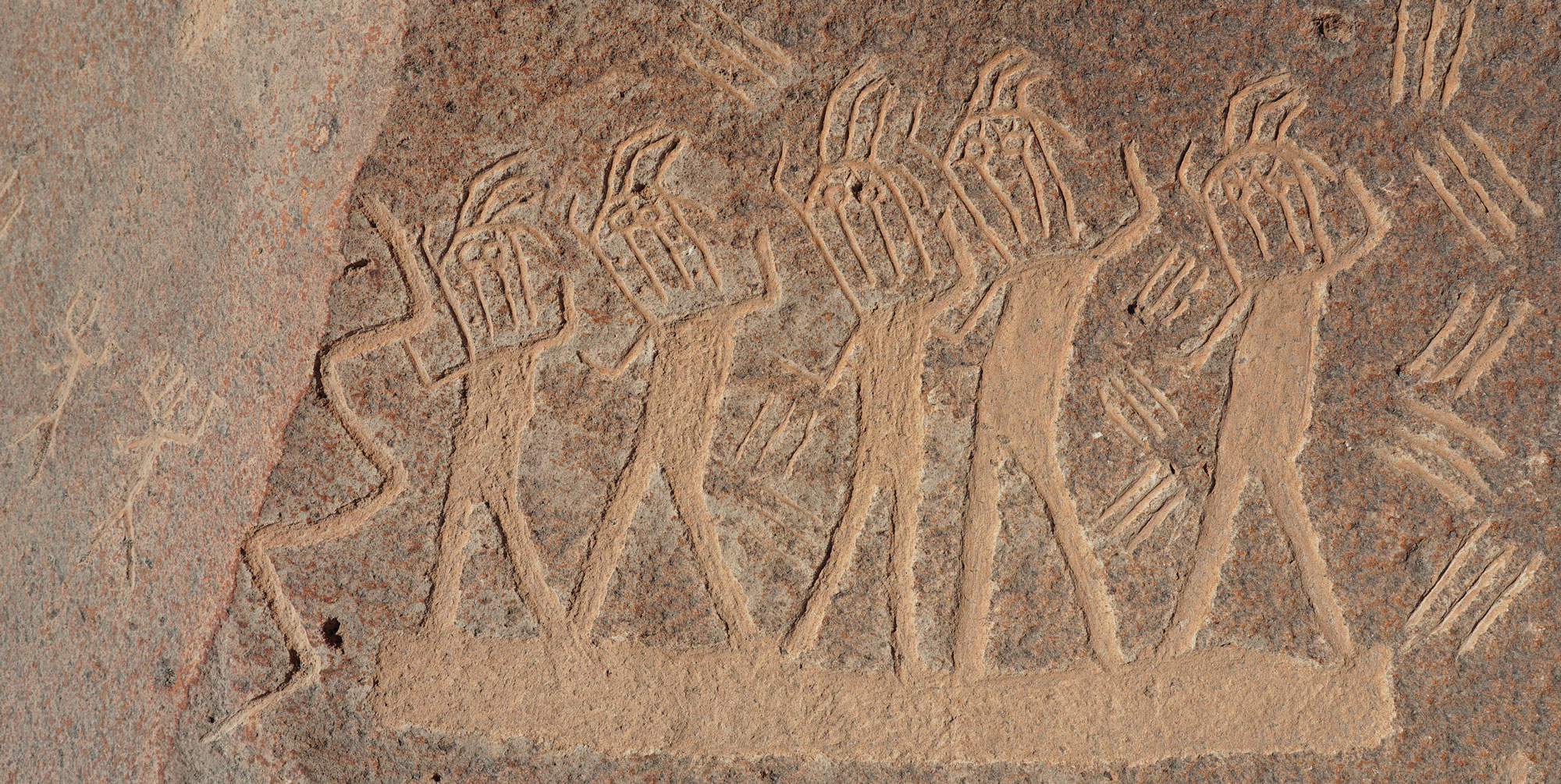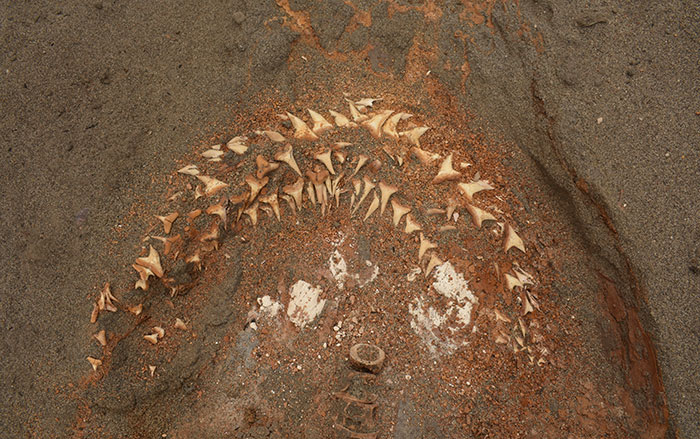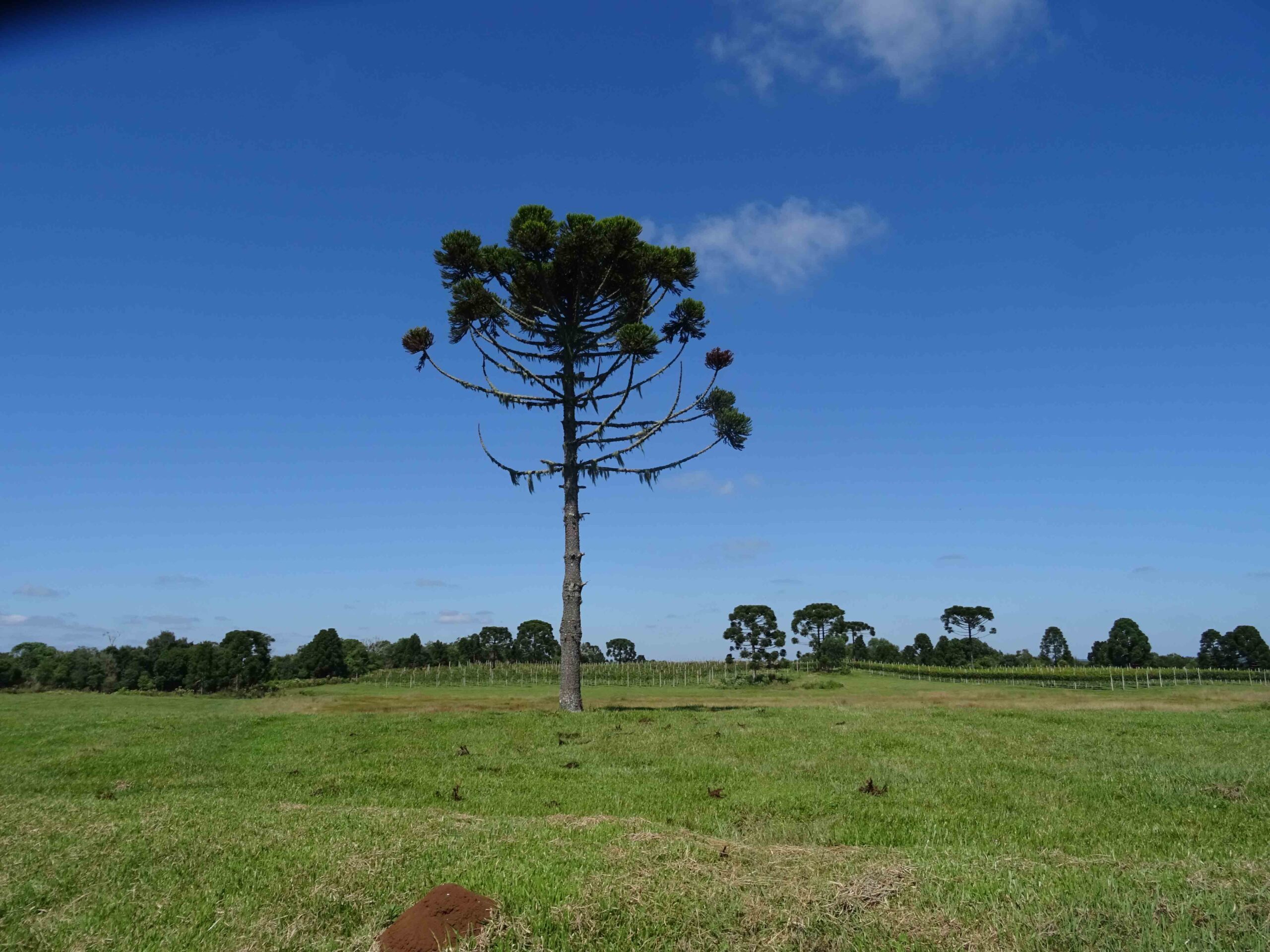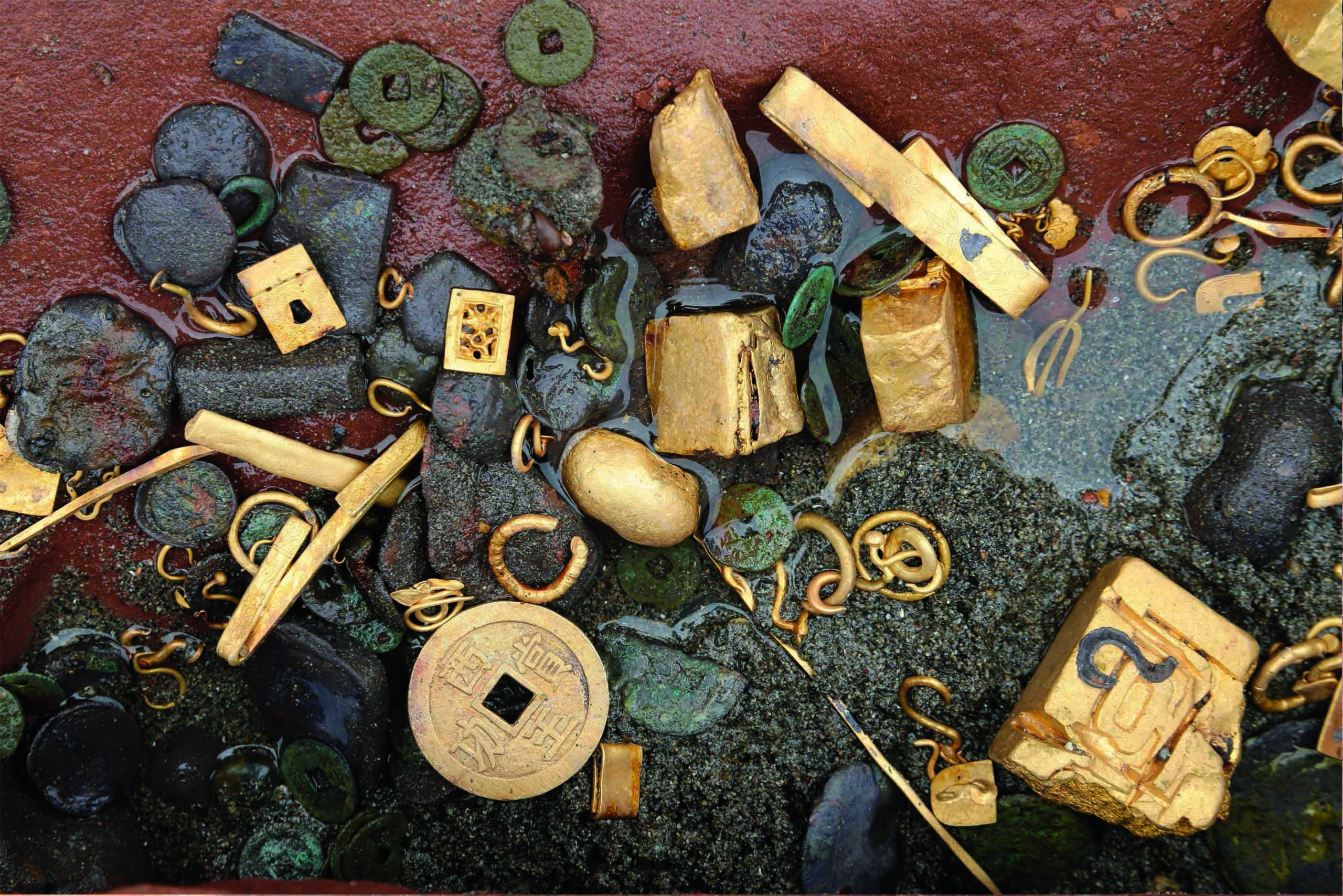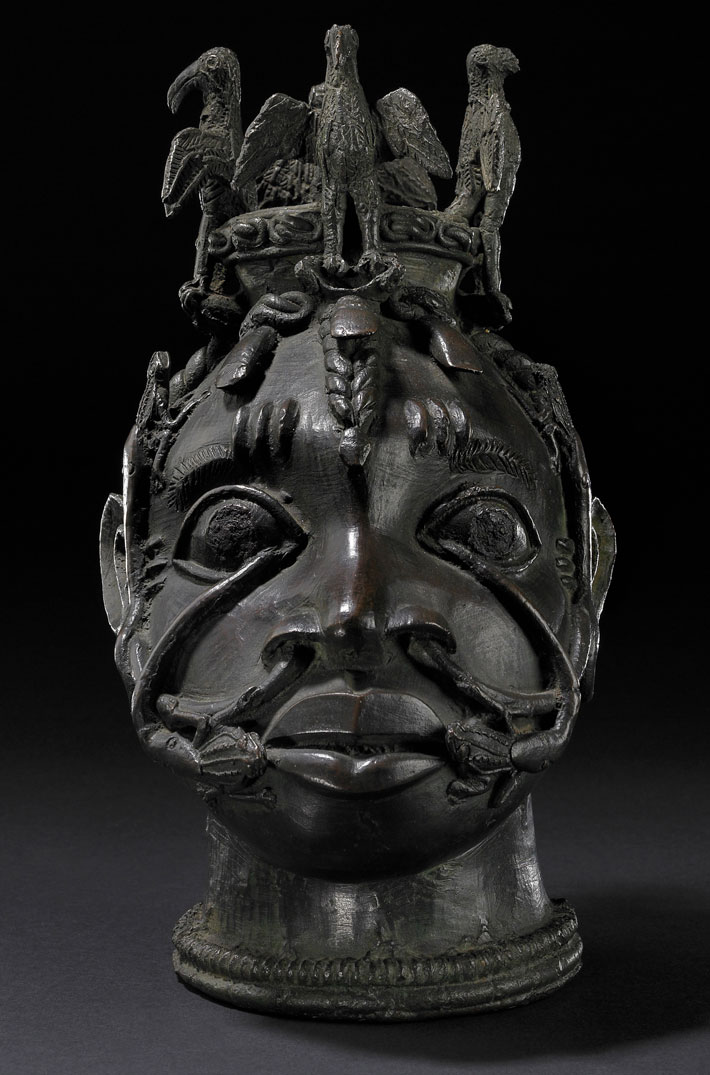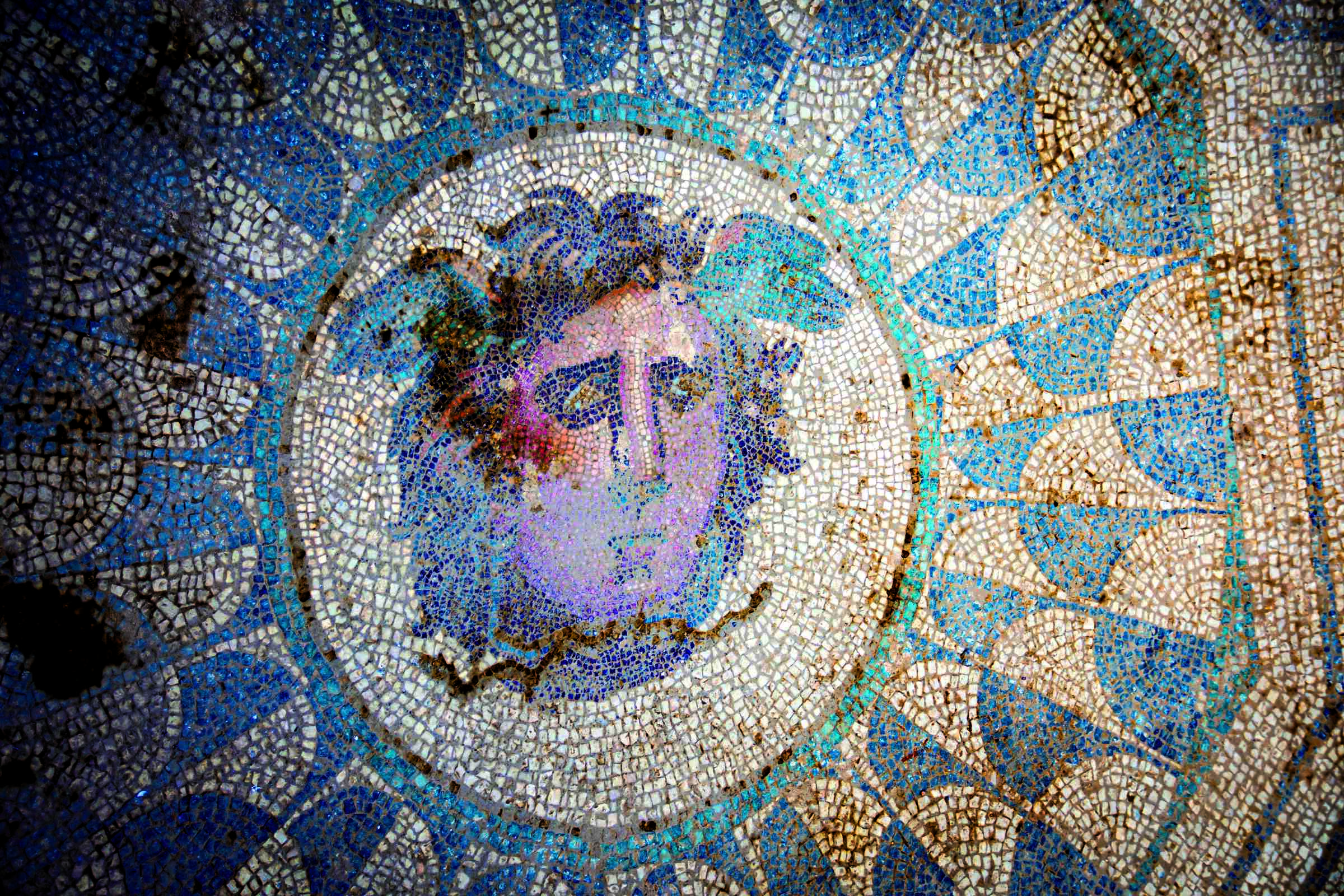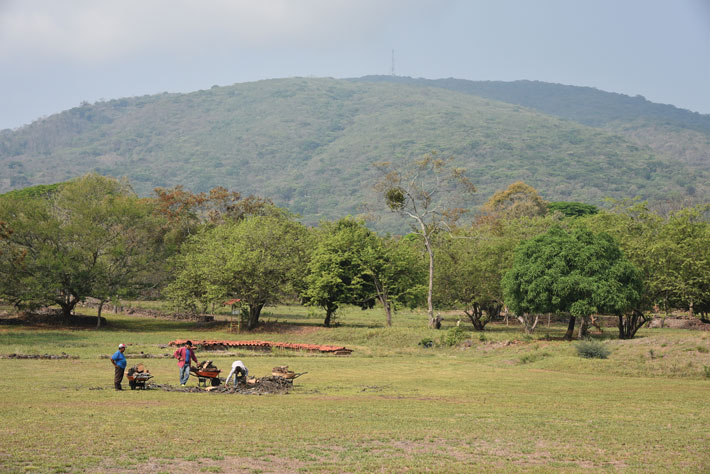
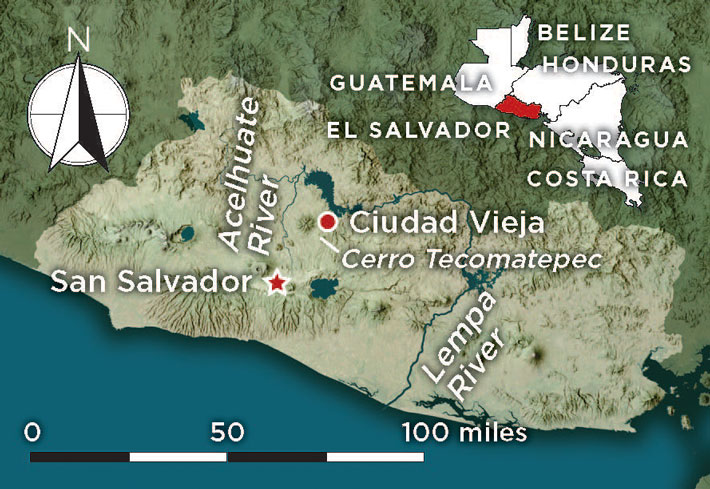
Pedro Escalante is one of the few people who can truthfully say that they have found a lost city in the jungles of Central America. Now a well-known Salvadoran writer, Escalante was a 25-year-old law student in 1970 when local farmers told him about a group of odd square mounds in the hills of central El Salvador. Escalante and a few other Salvadorans had been searching for the country’s first capital, which was built by Spanish colonists in 1528, abandoned after less than 20 years, and then all but forgotten. In 1545, the Spaniards moved the capital of what was then the province of San Salvador to a new location about two days’ journey on foot to the southwest, where it remains to this day. Colonial-era descriptions of the original settlement were sketchy and gave little insight into its location. “Take me there,” Escalante told the farmers.
“As soon as I saw it, I was quite certain this was la ciudad vieja, the old city,” Escalante says of the day he hiked through cornfields and forests and came upon ruined stone walls and—just as the farmers had said—overgrown mounds shaped like city blocks. The mounds had corners with sharp right angles and what seemed to be long, straight streets running between them. In the center of this cluster of earthen cubes, Escalante found the remains of the town square, just like the open space at the center of every Spanish colonial settlement.
Escalante’s discovery was confirmed by aerial photography and ground surveys, but by the late 1970s El Salvador was descending into a civil war that would force half a million rural people to flee their homes, including the farmers who had led Escalante to the site. Ciudad Vieja came close to being forgotten once again by the time a peace agreement was signed in 1992 and some residents began returning home.
In 1996, Salvadoran and U.S. archaeologists finally began an excavation of Ciudad Vieja, which would go on for 22 years. Practically untouched since the Spaniards abandoned it, the site offered an unparalleled look at the immediate aftermath of conquest, the subjugation of Indigenous people, and the dramatic impact of Spanish material culture in the Americas. Archaeological discoveries at the site have tended to confirm colonial accounts indicating that the town had a tiny Spanish population along with a sizable Indigenous majority living uneasily under their colonial overlords. “Nothing was ever built on top of the site, so it has all the evidence preserved in one place,” says archaeologist William Fowler of Vanderbilt University, who has worked there since excavations began and believes it is the most pristine colonial-era town in Latin America. “It’s the entire town, with the remains of all its economic activities including textile production, pottery, and agriculture. It’s all right there.”
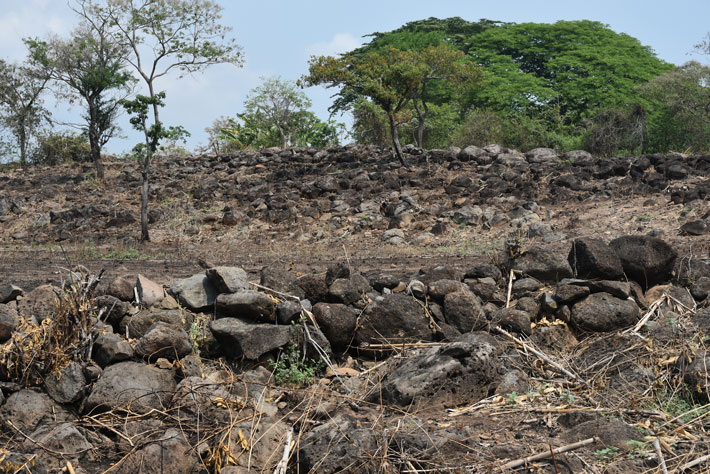
Ciudad Vieja sprawls across a scrubby plateau at the foot of a thickly forested 3,300-foot-high mountain known as Cerro Tecomatepec. On a recent spring day, custodians of the site have burned much of the overgrown vegetation in controlled fires, revealing ground strewn with obsidian flakes—most tiny, some the size of small knives—and Indigenous ceramics dating from the town’s short existence. Brightly colored parrots chatter in the trees, and the air smells of rotting guavas and mangoes. A huge conacaste, or devil’s ear tree, lies on its side, having been struck by lightning and sawed for firewood. The colonists constructed extensive earthworks, leveling hills to make the land suitable for building. Close observation reveals that the town was built on several wide artificial terraces. This was not a temporary settlement—the Spaniards clearly built it to last.
Ruined stone walls are all that’s left of the Spanish buildings now. Most are only a few feet high, but excavations have revealed that they often extended three feet underground, more evidence that the Spaniards intended to stay. In 1525, Spanish soldiers marched south for several days from Guatemala with a band of 300 Indigenous people—some allied and some subjugated—then set up a military camp and declared it a town. They named it San Salvador and it became the capital of the new administrative district of the same name. Within a year, facing hostility from local peoples, the Spaniards abandoned the settlement and straggled back to Guatemala.

Two years later, the Spaniards returned—this time with several thousand Indigenous people—and refounded the city, probably on top of the previous settlement. Using forced Indigenous labor, they built the new town with astonishing speed. Its cobblestone central square and grid street plan covered 111 acres. A visitor to Ciudad Vieja in 1540 might have thought they had come across a town in Andalusia, Spain, that had been grafted onto Central America’s tropical landscape. Along the town square were shops, stables, and residences with red tile roofs and lush courtyards, as well as a tavern. Behind the casa de cabildo, or town hall, there was a jail where offenders languished behind iron bars that were probably forged in the village’s foundries, where blacksmiths crafted tools and weapons. There was also an evangelization chapel constructed at the town’s highest point, where Spanish priests forcibly converted Indigenous people to Catholicism. To ensure a steady water supply, the Spaniards ordered that a dam be built across a brook that traversed the site. Cows and horses—imports from Europe—grazed in the surrounding fields. Like a medieval European town, Ciudad Vieja was surrounded by a defensive wall punctuated by numerous guard posts. Amid the chaos, war, and pestilence of the decades following the Spanish invasion, the city’s meticulous appearance reflected order and authority to European eyes.
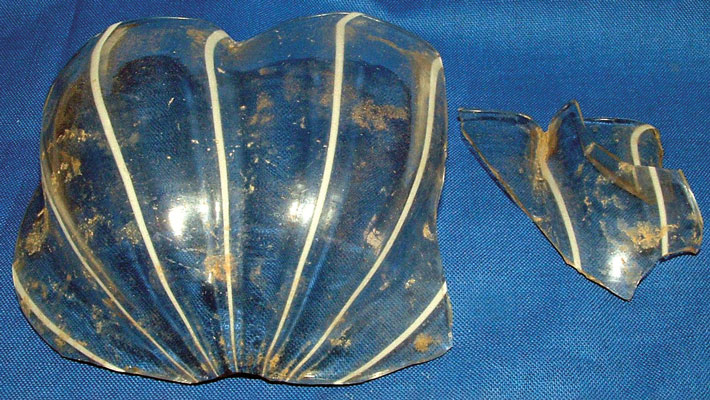
Yet a closer look would have revealed a more complex reality involving a mash-up of European and Indigenous cultures. Builders used iron nails—unknown in the Americas before the Europeans arrived—to erect Spanish-style buildings, but in those buildings’ kitchens, Indigenous women continued to use knives made of obsidian, as they always had. In fact, obsidian knives far outnumber iron tools in the site’s archaeological record. The Indigenous women also used traditional spindle whorls while creating textiles with native-grown cotton, but the ceramics archaeologists have found represent a mix of foreign and Indigenous techniques and styles. Similarly, both colonial and Indigenous luxury items were used at the site. Archaeologists found a fine Venetian glass goblet and a European silver coin, as well as locally crafted jade jewelry. Some houses had Spanish tile floors, but many more had traditional hard-packed earth floors, wattle-and-daub walls, and thatched roofs.
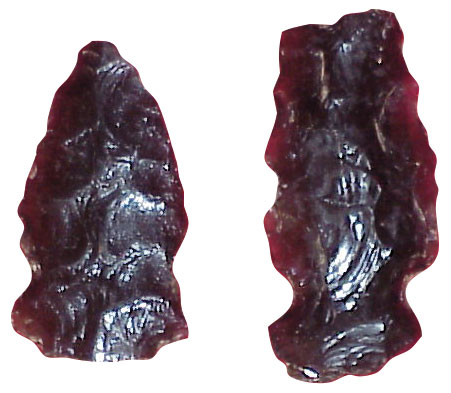
Extrapolating from colonial accounts, Fowler estimates that Ciudad Vieja had a population of about 5,000, more than 90 percent of it Indigenous, including allies of the Spanish from Mexico and Guatemala, as well as enslaved local people. “It’s a Spanish-designed and ruled town where the Spanish are a distinct minority, and you see this all through the material culture,” says Jeb Card, an archaeologist at Miami University. Card has studied all the ceramics uncovered in Ciudad Vieja and has counted about 600 fragments of amphoras of a type made in Seville used to transport olive oil, wine, and other supplies from Spain and around 100 fragments of Spanish tin-glazed pottery called majolica. These numbers were dwarfed, however, by the 50,000 sherds of Indigenous ceramics. Some of this imbalance might be because European items were more likely to have been taken when the city was abandoned. Still, Card says, this is the smallest percentage of European pottery found at any colonial site from this period in Central America, the Caribbean, or Mexico.

The various Indigenous peoples living in Ciudad Vieja were defined differently in relation to their Spanish rulers. Some groups had made alliances with the Europeans, while others had been defeated and enslaved by them. Allies included Tlaxcallan migrants from central Mexico, who had helped the Spaniards defeat the Aztecs and then joined the colonists’ invasions from northern Mexico to Peru as auxiliaries. Spanish accounts mention a significant Tlaxcallan community living in Ciudad Vieja, as well as Cakchiquels from the Guatemalan highlands, who had joined forces with the Spaniards against the dominant Quiché people but later rebelled against the colonists and were brutally subjugated. These alliances may have rested on a mix of free will and coercion, but, says Fowler, the Tlaxcallans did exercise agency in deciding to join the expeditions and then settling in the new city.
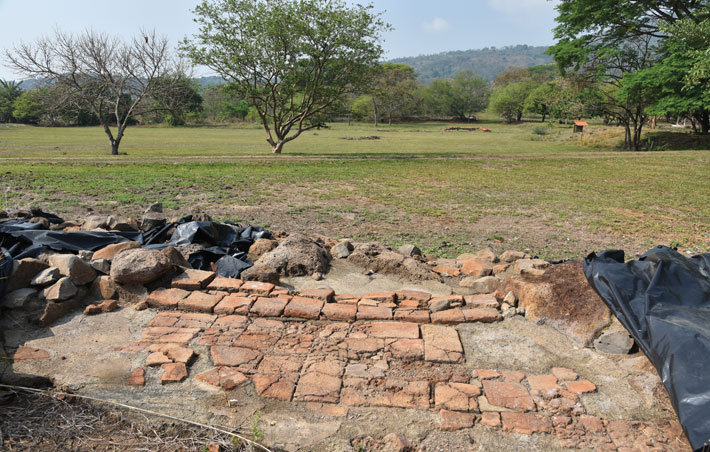
Over Ciudad Vieja’s short life, a tenuous cultural detente developed, says Card. Residents created their own style of pottery that combined Indigenous and European influences. Some ceramic bowls have wide, European-style rims but were made by local potters imitating Spanish wares. There are remains of pigs and cows, but also of animals eaten by Indigenous people such as dogs, deer, and snails, suggesting that some households were mixed, although their heads were likely Spanish. “Many households were purely Indigenous, but I doubt there were many that were just Spanish,” says Card. “It’s not the melting pot, mestizaje idea, because the Indigenous people are all still being classed as Indians in this Spanish hierarchy,” he says, using a Spanish word for an often-idealized concept of racial mixing.
Ciudad Vieja’s enslaved people came mainly from the Pipils and the Lencas. The Pipils were descendants of groups who had migrated from central Mexico down the Pacific Coast in about A.D. 900 and settled mainly in western El Salvador. They spoke an archaic version of Nahuatl, the language of the Aztecs. The Lencas long predated the Pipils in the area, had their own language, and lived mainly on the eastern and northern banks of the wide Lempa River, a key cultural boundary in antiquity that cuts through the middle of the modern country. These were two of a multitude of ethnicities that existed side by side within Ciudad Vieja’s stone walls.

How many of the Indigenous people in Ciudad Vieja were enslaved is unknown, but Spanish expedition leaders boasted of seizing thousands of Lencas and Pipils in raids in the area in the first decades of the sixteenth century. About 500 enslaved people were freed in 1548 after the city was moved to its new location, according to a colonial document cited by Fowler. Thousands of others languished in Spanish labor and evangelization camps known as encomiendas, where they produced cotton or food crops, built towns, or were dragooned into military service for Spanish armies battling frequent uprisings in what are now El Salvador and Honduras. The first African enslaved people started arriving in El Salvador in these years, replacing Indigenous people whose numbers were declining fast from smallpox and other diseases introduced by Europeans. At least a few of these enslaved people were taken to Ciudad Vieja, the first Africans forced into a local system of servitude that was not abolished until 1824.
One discovery that has surprised archaeologists working in Ciudad Vieja is the number of blacksmith shops they have identified in the town. Thus far, they have found remains of two such facilities. The volume of excavated metal artifacts suggests there were probably more, says David Messana, an archaeologist at the David J. Guzmán National Museum of Anthropology and director of excavations at Ciudad Vieja from 2015 through 2018. At the two smithies, he and Fowler found an ironworking forge, iron slag, and piles of coal and ash. Throughout the site, they unearthed hundreds of iron objects such as chisels, blades, spikes, door hinges, tacks, and nails. Using iron ore mined in the red soil of nearby Cerro Tecomatepec, blacksmiths forged the bullets, spearpoints, horseshoes, and bridles the Spaniards used as they struggled to subdue the region’s restive Indigenous populations. “El Salvador was a major center of resistance,” says Messana. “In Mexico, the Spaniards arrived in 1519 and within three years had conquered the Aztec capital of Tenochtitlan. In El Salvador, they founded a town and were thrown out about a year later. When they tried again in 1528, they put up every kind of security and protection they could think of. Even then, they were again forced to abandon the town.”
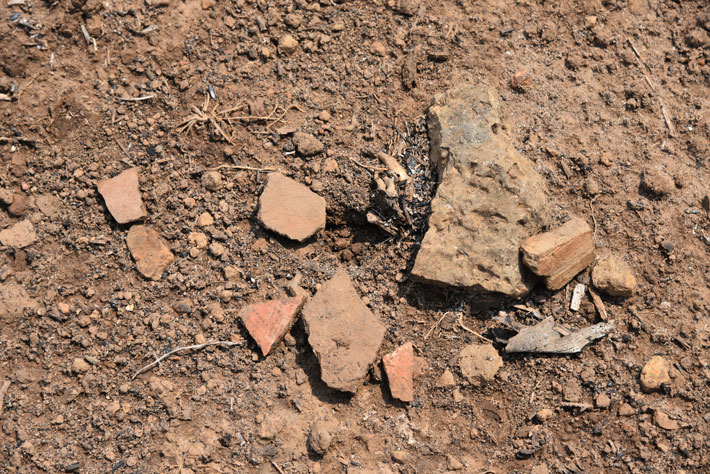
Still, Messana believes it would be a mistake to think of the conflict as simply Spaniards versus Indigenous peoples. The early sixteenth century was a maelstrom of tactical alliances and blood feuds as the new colonial order slowly asserted itself. “There was a political war and a military war, but there was also an ethnic war, or rather several wars at once,” Messana says. “There were Spanish against Spanish, Indigenous against Spaniards, and also Indigenous against Indigenous, pitting those who made alliances with the Spaniards against those who continued to resist.”
These crosscurrents all appear in the archaeological finds at Ciudad Vieja, a country town crossed with a military camp whose residents lived in colonial segregation. The southeast quadrant of the town was much lower than the other neighborhoods. People would have needed a ladder or steep staircase to leave that sector, which was hemmed in by walls and prone to flooding. Excavations revealed that the walls of its densely packed houses were much narrower than those elsewhere in the town. Indigenous people must have resided all over the city, but Messana believes this neighborhood was a kind of ghetto, where those who were neither fully subjugated nor trusted by the Spaniards were forced to live. On the main square, next to the town hall, Messana unearthed foundations of a large structure with a wide entrance. The structure contained so much building debris that it probably had a now-collapsed upper story. The building would have accommodated hundreds of people, and Messana believes it once functioned as a barracks. “There were around five thousand Indigenous people living in the town and maybe two hundred Spaniards,” he says. “The Spaniards needed bodyguards.”
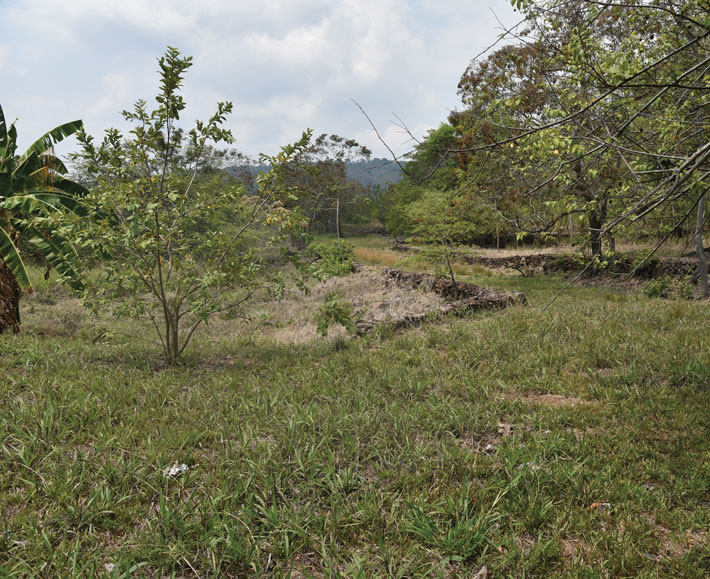
The main Spanish account of life in Ciudad Vieja corroborates this image of tension among its residents. Written in 1532 and based on interviews with Spanish rural landlords called encomenderos, the 35-page account known as Relación Marroquín is a laundry list of complaints about the supposed indolence of the Indigenous peoples. The encomenderos, whose holdings were spread all over present-day El Salvador, were absentee landlords who lived in Ciudad Vieja, forming the core of the town’s Spanish population. They were supposed to Christianize those who worked their farm estates, but none of the 59 landlords interviewed in the account ever mentions religious instruction. Instead, they complain about how the amount of food and cotton brought to them in tribute is insufficient to feed and clothe their households. Nor did the Indigenous people produce what the Spaniards really wanted. “They are poor people who grow a bit of corn, and they have not found any gold,” says one, Martín Lora, speaking of the 250 households under his charge. Another, Antonio Melara, calls the Indigenous people on his land “lazy wretches who don’t want to work…and have no will to do anything.” Other encomenderos talk about these people as if they were livestock, or worse.
Deep mistrust can be seen in the layout of Ciudad Vieja. Anyone coming into the town would have had to pass a sentry post just inside the encircling wall, climb a road to another guard post, and then walk around a boulder in the road, all of which would have slowed them down. The first sentry post had a commanding view of a steep valley, and parts of its stone walls still stand. During El Salvador’s civil war in the 1980s, leftist guerrillas used the post to launch attacks on military convoys traveling down the main road to modern San Salvador on the other side of the Acelhuate River Valley. Nearby, Fowler and Messana have found tin cans, bullet casings, and other war detritus left by these fighters.
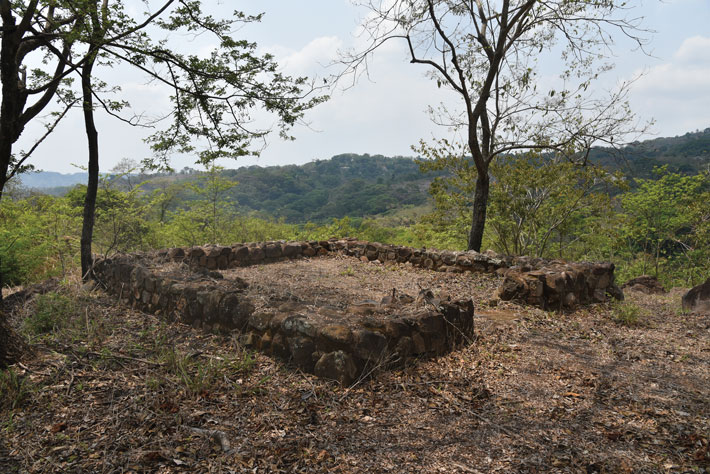
Planning and constructing Ciudad Vieja in the 1520s must have been a massive undertaking, requiring surveyors and armies of builders. “Surely it was someone who knew about engineering or military architecture, or both, who led the planning and building,” Messana says. “There’s no way they could have planned a city as large as this without specialized knowledge.” Relación Marroquín says almost nothing about the town itself—how it was designed and constructed, what it looked like, who lived there. Yet from other documents, mainly letters written to authorities in Spain after the town emptied out, historians have pieced together why it was abandoned. For one thing, the iron in the soil of Cerro Tecomatepec that made the site so attractive to blacksmiths also attracted a great deal of lightning, which frequently struck buildings, downed trees, and terrified livestock. There were other problems, too. Despite the earthworks, the topography was deemed too hilly for the city to expand. Although successive plagues of European diseases had swept down from Mexico and drastically reduced their numbers, Indigenous peoples still defiantly waged war on the Spanish colonists. An even greater threat, however, came from rival Spanish warlords in Nicaragua, who had twice tried to invade San Salvador with their own armies of allied Indigenous people in a bid to gain control of the region’s rich cotton, grain, and cacao farms. “All these factors contributed to the decision to abandon the city,” says Escalante.
In 1545, the Spaniards moved the capital about 40 miles southwest to the wide, well-watered Acelhuate River Valley, which was farther from their marauding compatriots in Nicaragua and closer to the richest cacao groves, in the volcanic region of Izalco. By this time, cacao had become an important cash crop, captivating Spanish colonial elites in Mexico and later in Spain itself, and setting off the West’s enduring love affair with chocolate.
Although it goes unmentioned in colonial accounts, moving the city must have been a huge endeavor. Every piece of furniture, every pew, altar, and crucifix in the town’s churches, the contents of every household, all official documents, the equipment for the town’s industries, and even floor and roof tiles—all of it had to be carried to the capital’s new site. “Can you imagine the effort that took?” says Escalante. “There were no roads to speak of, just what would look like paths today, and everything had to be moved by people or by horses with carts.” The town’s entire population is presumed to have moved, too, says Card, although he has identified pieces of broken crockery from levels that suggest at least a few stayed for another generation or so.
Within several decades, or perhaps even sooner, the old San Salvador was practically forgotten and remained so for centuries. Publication of Relación Marroquín in 1966 helped revive interest in Ciudad Vieja and spurred efforts to find its ruins. By then, its buildings had long since collapsed, its grand main square had become an overgrown rice paddy, and the location of the old colonial capital, whose original footprint was larger than those of major colonial cities such as Santo Domingo in the Dominican Republic and Panama City, was unknown.
Meanwhile, San Salvador thrived in its new location, growing through the centuries to become a prosperous urban agglomeration of more than a million people. As the city expanded, most of El Salvador’s Indigenous, European, and African peoples intermarried and blended into one mestizo whole. Yet a separate Indigenous bloodline never died out. These peoples’ communal farms, where they raised corn and beans for their own consumption, and which dated from the colonial era, were abolished by government decree in the 1880s and turned over to coffee cultivation. A series of rural revolts culminated in a 1932 uprising that was crushed by a military dictatorship, an episode that became a rallying cry for guerrillas in the civil war of the 1980s. Centuries before, El Salvador’s first iron tools and weapons were forged in Ciudad Vieja. So, too, was the resolve of the town’s Indigenous peoples to fight for their way of life.




